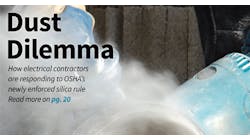Commonly misunderstood/misapplied terms, part 13
What's the difference between watertight, raintight, water-resistant, waterproof, weatherproof, rainproof, drip-tight, and drip-proof? Of these terms, the NEC defines only watertight and weatherproof. "Watertight" means constructed so that moisture won't enter under typical conditions of use. "Weatherproof" means constructed to that weather doesn't interfere with its operation.
An Informational Note in Art. 100 states that rainproof, raintight, or watertight equipment can fulfill the requirements for weatherproof if that weather doesn't include conditions other than wetness. For example, something listed as rainproof isn't considered weatherproof in Fargo, ND, due to the snow and ice of winter there.
So what should you do about all of these other terms? If the NEC doesn't define them, should you just ignore them? Generally, yes. It's best to avoid using "electrical" terms that the NEC doesn't define. It wastes your time and causes confusion to play word guessing games.
You must ensure your equipment is listed and labeled for the intended use [110.3]. Rather than try to decipher the nuances between drip-proof and drip-tight, you could ask the manufacturer what conditions of use the testing laboratory says justify the labeling. But a more efficient approach is to specify equipment so the NEMA enclosure type (e.g, Type 3R, 3S, 6, 12) is suitable for the environment of use.


